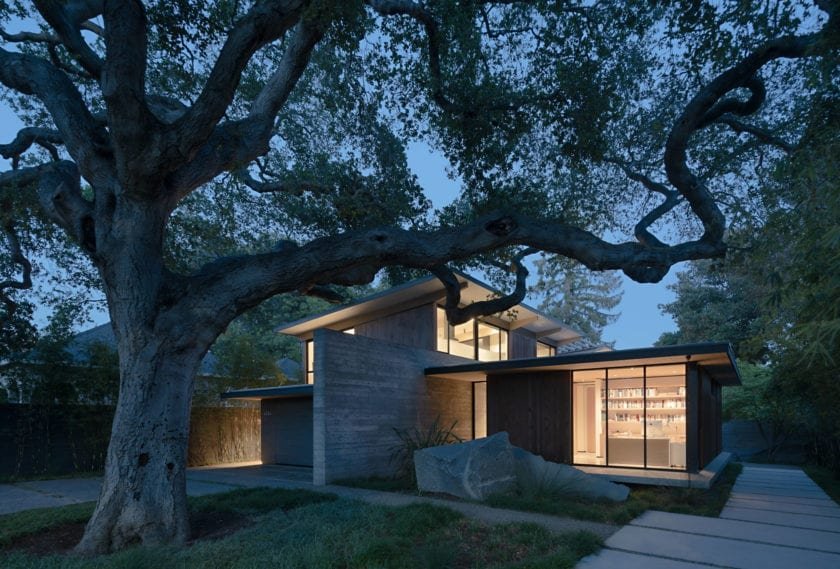Curated by Hana Abdel
CULTURAL ARCHITECTURE, HOUSING, COMMUNITY • IRAN
Architects : ZAV Architects
Area : 10300 m²
Year : 2020
Photographs : Soroush Majidi, Tahmineh Monzavi, DJI, Payman Barkhordari
Architect In Charge : Mohamadreza Ghodousi, Fatemeh Rezaie, Golnaz Bahrami, Soroush Majidi
Design Team : Sheila Ehsaei, Sara Jafari, Payman Barkhordari, Mohsen Safshekan, Kaveh Rashidzadeh, Hossein Panjehpour
Landscape : Maryam Yousefi, Morteza Adib
Interior Design : Sara Jafari, Taraneh Behboud, Sara Nikkar, Mohsen Dehghan
Light Consultant : Tajang Light
Supervisor : Soroush Majidi, Payman Barkhordari, Sheila Ehsaei
Modeling : Somayeh Saeidi
Presentation : Fereshteh Assadzadeh, Somayeh Saeidi, Arshia Hashemipour, Dorsa Tavakoli, Sara Fallahzadeh
Owner : Ali Rezvani
Client : Ehsan Rasoulof
Structural Design : Behrang Baniadam, Rouhi Touski
Civil Engineer : Farhad Beigi
Electrical Engineer : Pejman Moradian
Mechanical Engineer : Saeid Afsharian
Culinary Manufacturer : Matbakh Ara
Environment Consultant : Salman Rasouli, Roya Yazdizadeh
Accommodation Consultant : Nasim Mosavar
Project Constructor : Amir Tehrani Nobahari
Construction Manager : Hormat Ghasemi
Construction Vice Manager : Ramin Koulaghani, Amin Timas
Mechanical Constructor : Javad Irandegani, Hamid Haji Posht-e-Gol
Floor Constructor : Davoud Etemadi
Windows Builder : Mehra Company
Interior Plaster : Gholamali Abbasi
Exterior Plaster : Esmaeil Salimi
Construction Painter : Farzad Moharrami
Logistics : Nabiollah Timas, Borhan Pouyan, Ali Ghanbari, Ayoub Owj Hormozi, Khalil Owj Hormozi, Abdolhamid Hormozi, Davoud Hormozi, Ali Ghalandari Zehi, Farhad Shadan, Assad Gedri, Abbas Gedri, Ali Ghazi, Majid Bazmandeh, Ali Nasernia, Rahmat Ghalandari, Davoud Mohtaji, Morteza Mohtaji, Mohammad Vahedi, Mosayeb Zarei, Kambiz Narouii, Yasser Narouii, Nassir Narouii, Din Mohammad Narouii, Mojtaba Farhadi, Abbas Nassaji, Esfandiar Khorshidi, Khoubyar Khorshidi, Jalal Bameri, Ghassem Bameri, Enayat Karami, Reza Amirian, Eshgh Ali, Nabi Akrami, Mohammad Moallemi, Sajjad Gholampour, Seyfollah Rasouli, Ali Golzari, Soheil Khedmatkari, Hosein Zohouri
Country : Iran

Neighborhood empowerment by way of city growth, Hormuz Island, Iran – Hormuz is a previously wonderful historic port within the strategic strait of Hormuz within the Persian Gulf, South of Iran, that controls the cargo of petroleum from the Center East. The island has excellent colourful surreal landscapes. Oddly, the native inhabitants of the gorgeous, touristic and politically strategic island battle economically, getting concerned in unlawful trafficking actions utilizing their boats. Presence in Hormuz is a sequence of city developments by a semi-public establishment that employed ZAV Architects, in an effort to empower the local people of the island. Its second section is a multipurpose cultural residence known as Majara residence (that means journey) that ties collectively the lives of native individuals and guests each culturally and economically.

What’s to my profit, what’s to the advantage of all? In a rustic the place the state struggles with political disputes exterior its borders, each architectural venture turns into a proposal for inner governing alternate options, asking fundamental questions: what are the bounds of architecture and the way can it recommend a political different for communal life? How can it attain social company?
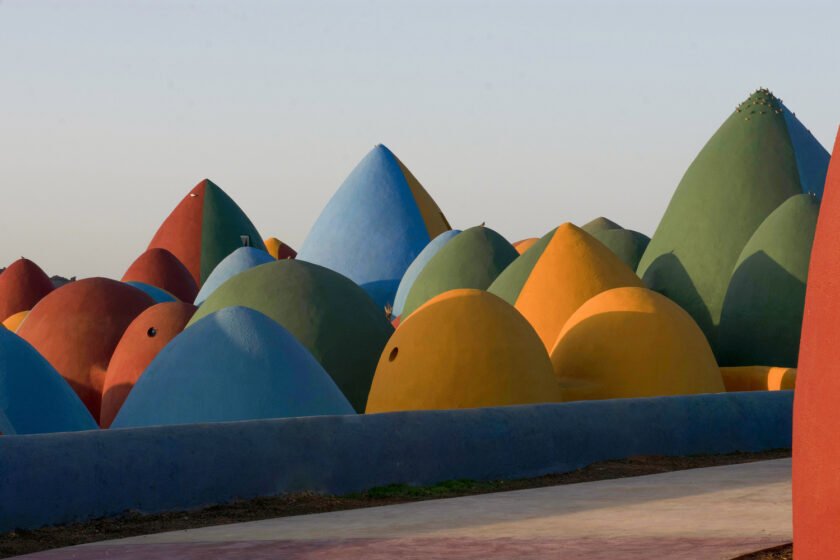
Architecture has the capability be a mediator within the center floor that converges the pursuits of various teams, from the state and buyers to numerous lessons and teams of individuals. Majara does so in bringing collectively the homeowners of land from the neighboring port of Bandar Abbas who set up an annual land-art occasion in Hormuz, the buyers from the capital metropolis Tehran, and the native individuals of Hormuz as companions within the venture.

Beneath the financial misery of sanctions, growing the GDP generates social change, which on this venture is achieved by: 1. Building economically, to the advantage of the consumer. 2. Earmarking an even bigger share of the finances to labor prices relatively than costly imported supplies, to the advantage of the native inhabitants, empowering them by providing coaching for building expertise. 3. An adaptive and future-proof spatial situation that may reply to unpredicted want, to the advantage of the consumer and the island. 4. Utilizing supplies and human sources from Iran, to scale back building and transportation prices and improve the GDP, to the advantage of the entire nation.
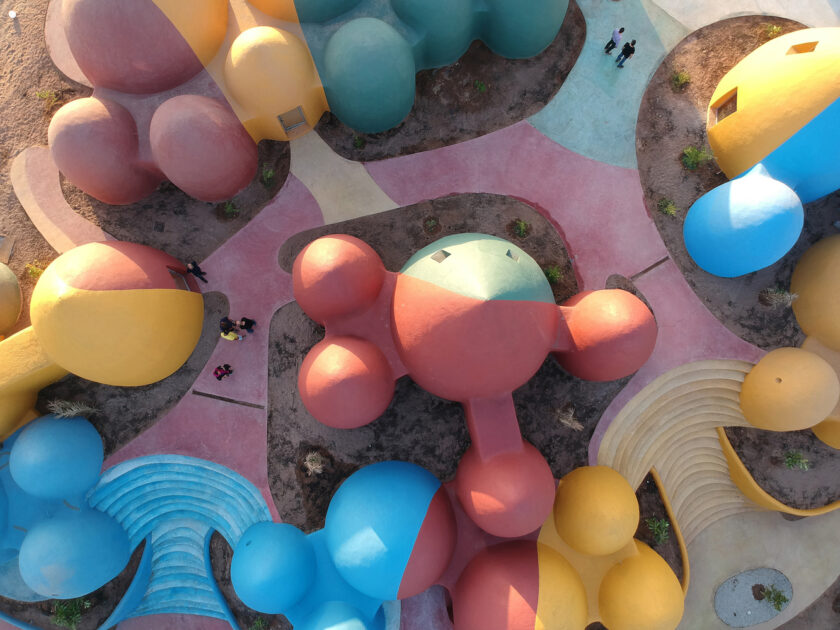
Infinite Nader Khalili’s – Presence in Hormuz is a steady course of aiming at building belief relatively than architectural objects, in an effort to encourage the participation of native individuals and the inclusion of their pursuits in any intervention within the island. The venture is a mess of small-scale domes constructed with the super- adobe strategy of Nader Khalili, the progressive and easy approach utilizing rammed earth and sand. Domes are acquainted constructions within the area. Their small scale makes them suitable with the building capabilities of native craftsmen and unskilled staff, which have been ready for this venture with earlier smaller tasks. At the moment they’re educated grasp super- adobe masons, as if Nader Khalili multiplied exponentially.
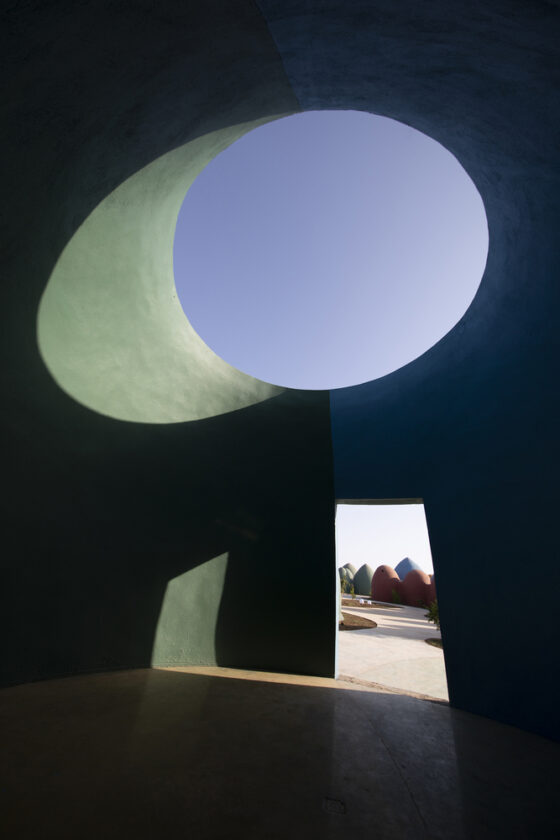
Swelling Earth – the infinite variety of colourful particles, be they soil, sand, gravel or stone, pile up and kind the rainbow topography of Hormuz island. On this venture a carpet is woven with granular knots impressed by the particles that make up the ecotone of the island. The sandbags that create the spatial particles (aka domes) are full of the dredging sand of the Hormuz dock, as if the earth has swollen to provide house for lodging.

© Soroush Majidi 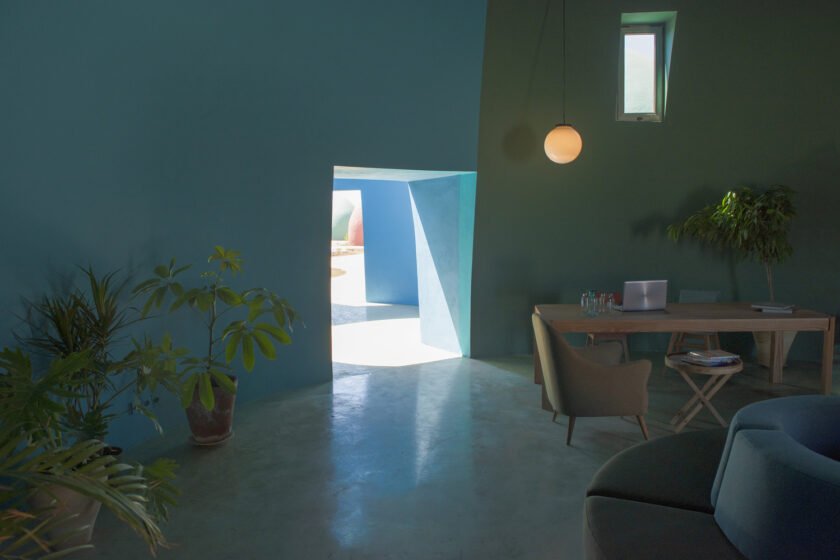
© Soroush Majidi 
© Soroush Majidi 
© Soroush Majidi 
© Soroush Majidi 
© Soroush Majidi 
© Soroush Majidi 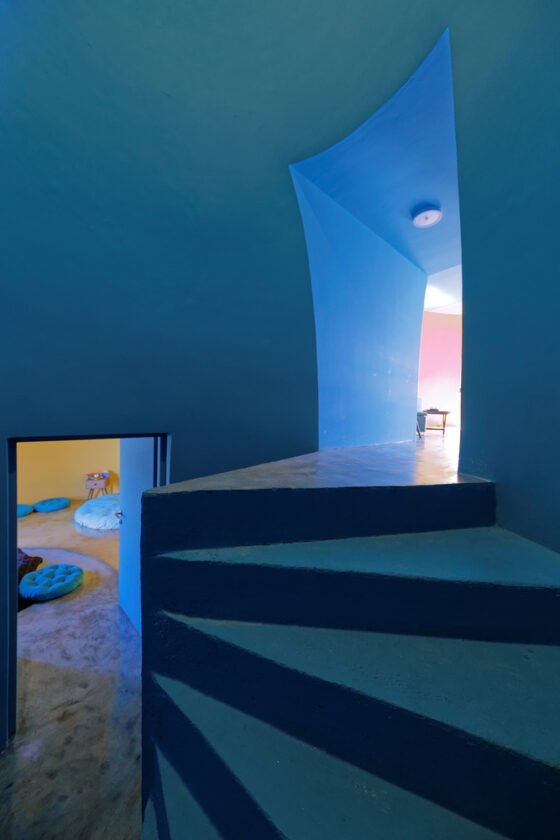
© Soroush Majidi 
© Soroush Majidi 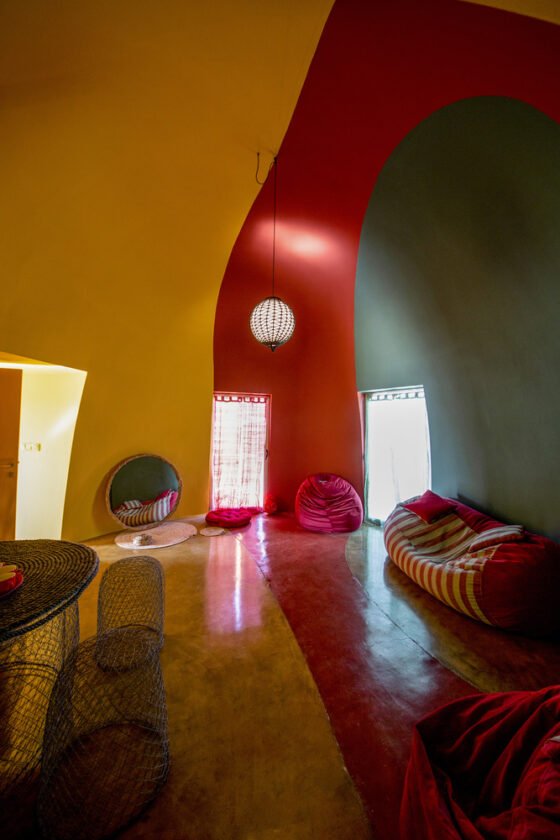
© Soroush Majidi 
© Soroush Majidi 
© Soroush Majidi 
© Soroush Majidi 
© Soroush Majidi 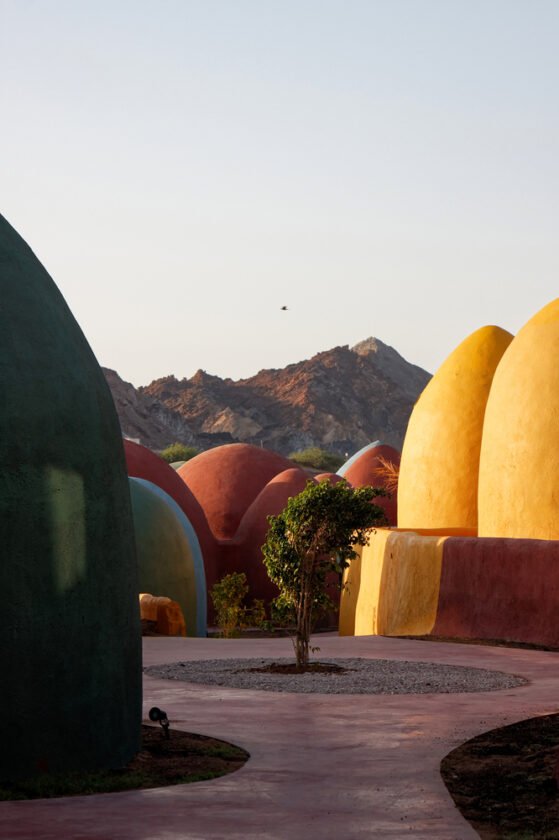
© Soroush Majidi 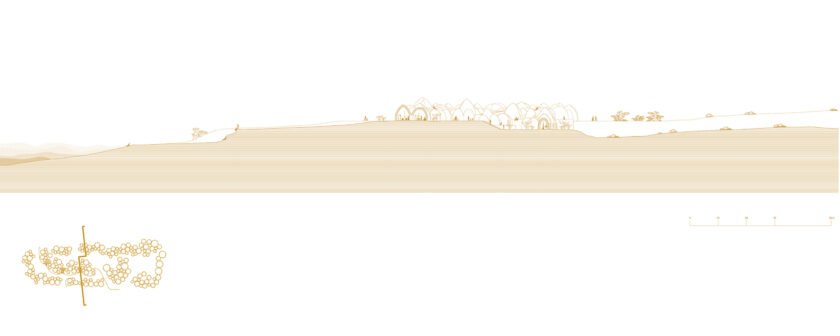
© Soroush Majidi 
© Soroush Majidi 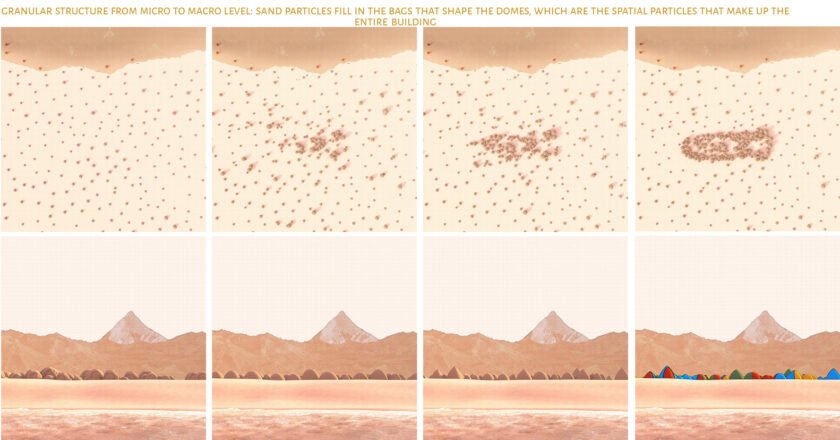
© Soroush Majidi 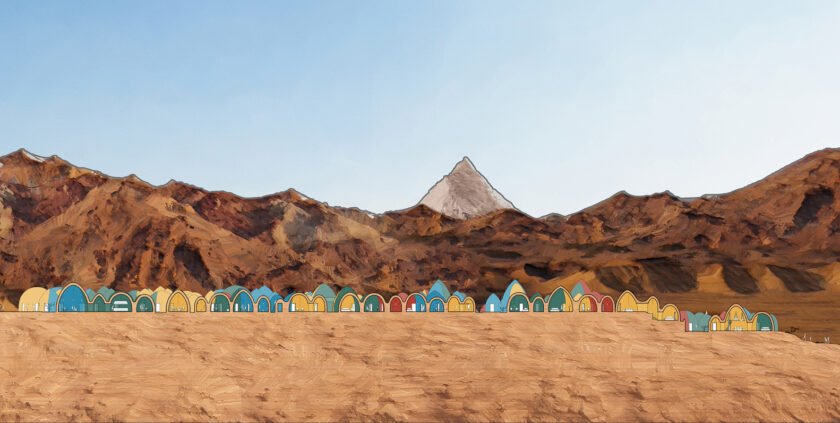
© Soroush Majidi 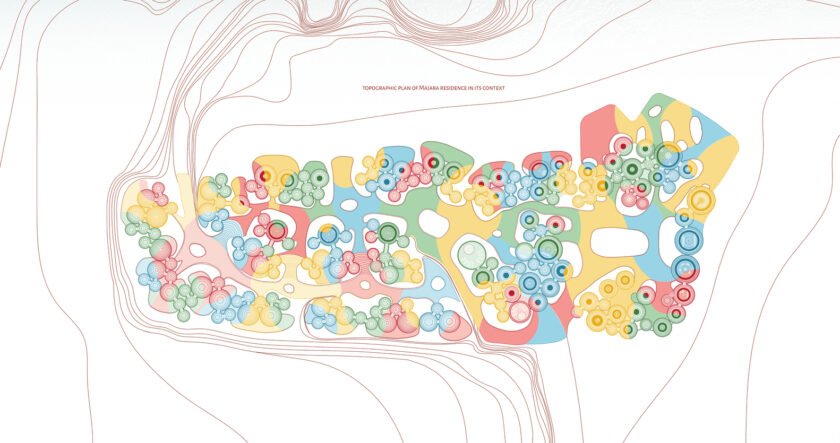
© Soroush Majidi 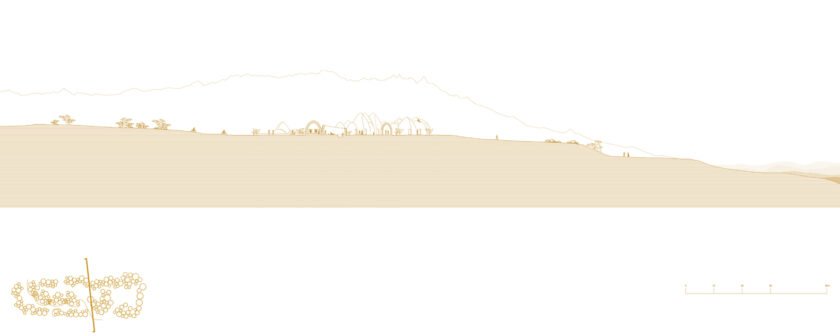
© Soroush Majidi


